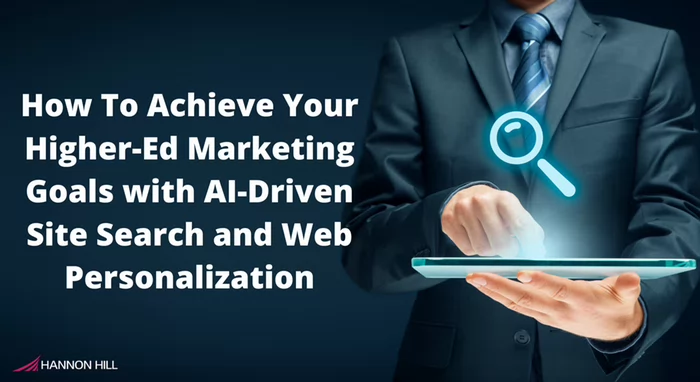
A recent webinar hosted by Hannon Hill in collaboration with Cludo provided insights on the benefits of integrating web personalization with intelligent search solutions on higher-ed websites.
The webinar featured Nick Wassenberg and Sara Kelzer from Cludo and Graham Lewis from Hannon Hill. Each speaker offered unique perspectives and practical strategies for engaging audiences from the moment they arrive on a website.
The following recap provides a summary of the presentation:
Wassenberg started the webinar by sharing real-world anecdotes to illustrate the complexities faced by higher education institutions.
Drawing parallels with his own family, he emphasized the diversity in user behavior and expectations.
For example, his niece, Eleanor, with her aspirations to attend an Ivy League school, contrasted sharply with his nephew, Ian, whose college preferences were more fluid.
These contrasting examples highlighted the challenge of catering to the diverse needs of prospective students.
Wassenberg then outlined three key problems faced by higher education institutions:
1) Audience Diversity and Predictability
Predicting web behavior has become increasingly challenging, with many audiences visiting higher-ed websites. The growing complexity of these sites compounds this issue, making it crucial to understand and cater to different user needs, including students, parents, faculty, alumni, and more.
2) Effective Site Search
Wassenberg shared a cautionary tale about a high-ranking individual who couldn't find their own information on a website despite it being present. This incident underscored the importance of having an effective search function. A robust site search aids navigation and provides critical feedback on user behavior and content gaps.3) Managing Content and Expectations
Higher education institutions face the dual challenge of managing vast amounts of content while meeting high user expectations. Wassenberg pointed out that users now demand engaging, relevant, and easily accessible content. The integration of generative AI can play a significant role in meeting these expectations by delivering trustable and personalized content.
Wassenberg emphasized the need for a strong feedback loop to continually improve site search and content management. He noted that despite the increasing use of AI and the pressure to do more with less, maintaining high user experience standards remains paramount.
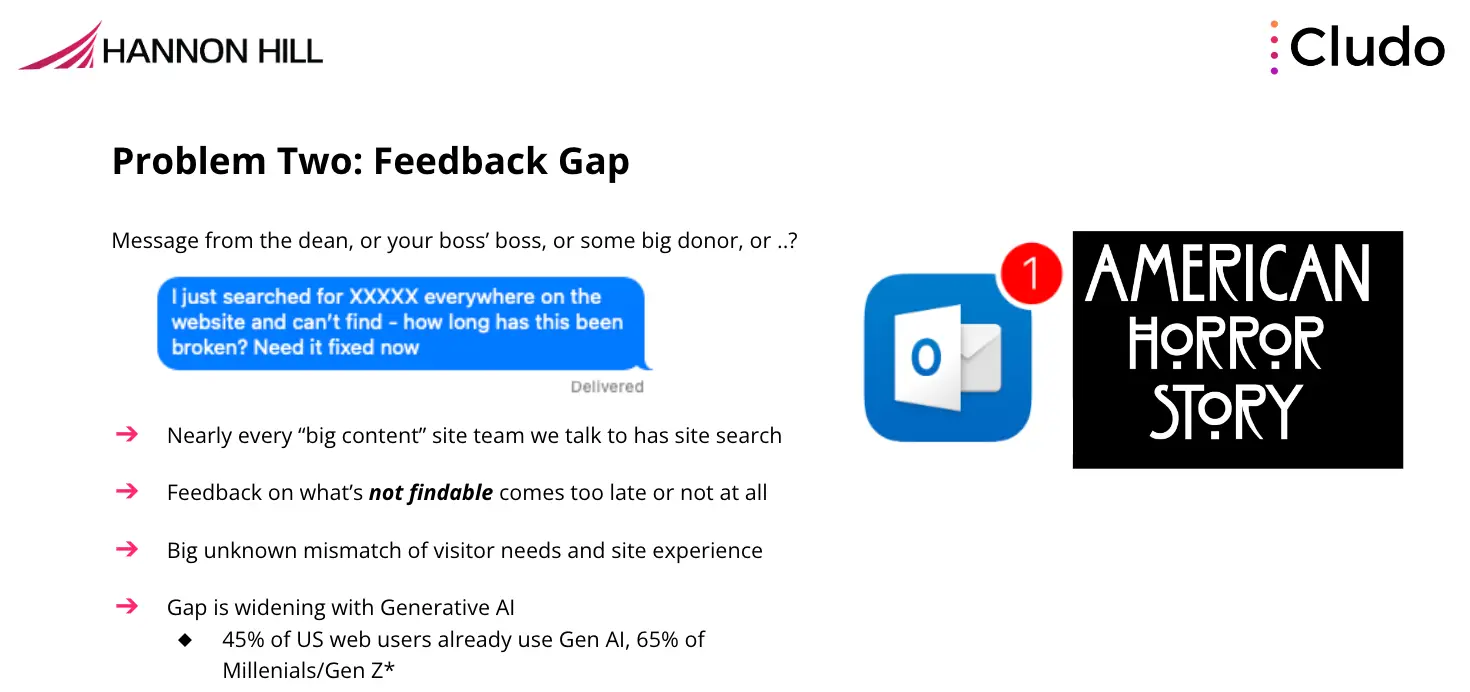
Kelzer emphasized the importance of optimizing the search bar, which is often the second most visited page after the homepage. She discussed implementing an overlay with pre-filtered searches, which would provide quick access to common questions.
Phases of Site Search Experience
Kelzer discussed the importance of pre-search suggestions to showcase popular search terms or key campus features, guiding users effectively. She emphasized intelligent autocomplete and search-as-you-type features that suggest relevant keywords and direct links, making the search process more intuitive.
AI-Driven Enhancements
Kelzer also discussed AI-driven enhancements like AI chat, which handles top-of-the-funnel queries and frees up admissions teams for more personalized interactions. Additionally, the recently launched AI Summary provides bulleted lists of information, mirroring familiar experiences like Google's search labs, to deliver concise and relevant information to users.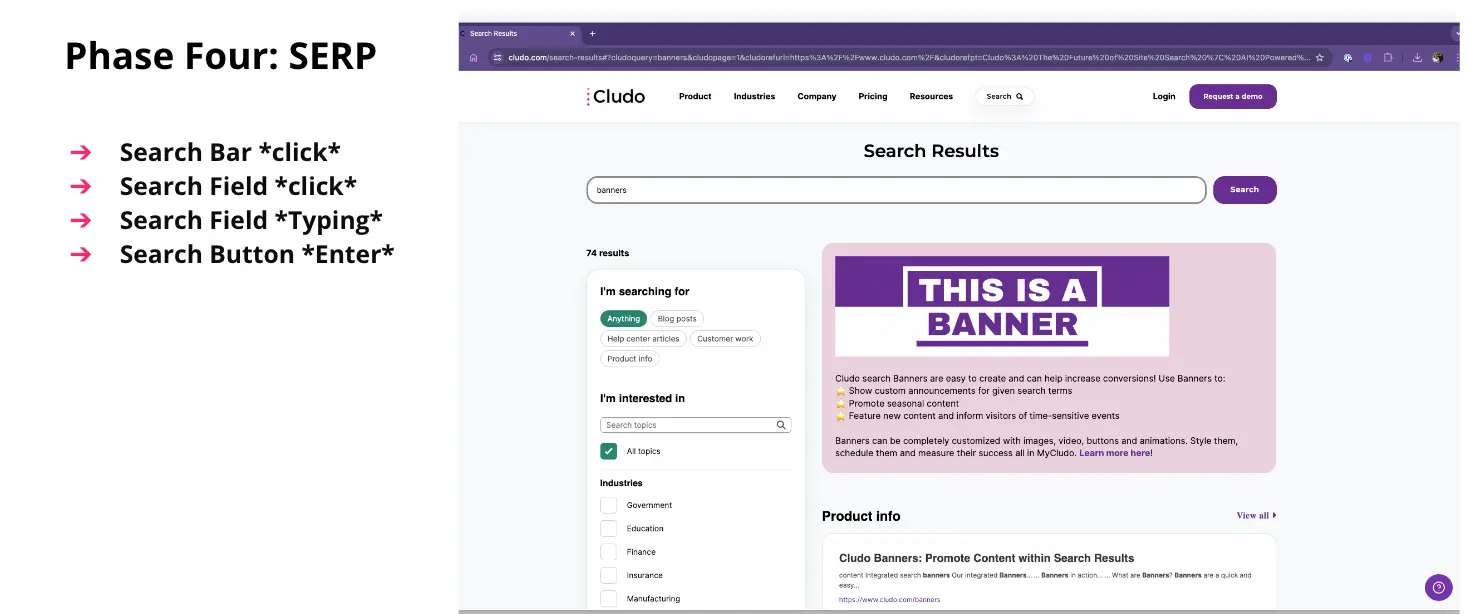
Closing the Feedback Loop
To close the feedback loop, redesigned dashboards track metrics like ineffective searches and popular search terms, helping institutions identify content gaps and improve their search functionality. Module analytics and intelligent 404 tracking also play a crucial role by suggesting alternative pages when users encounter dead links, ensuring a seamless navigation experience.
Kelzer’s overview underscored the importance of an optimized, user-centric site search experience, leveraging AI and actionable insights to meet the evolving needs of higher education websites.
She stated, “It’s essential to keep refining our tools to meet users’ expectations and deliver the best possible experience.”
Lewis focused on the critical role of content personalization in enhancing user experiences. He provided a detailed look into why personalization is essential and how it can be effectively implemented.
Lewis shared a powerful statistic:
94% of organizations see a rise in conversion rates after personalizing their websites.
Personalization is crucial as users now expect websites to deliver tailored content that meets their specific needs at first visit without the need for extensive searching.
According to research,
87% of first-time visitors to college websites never come back.
This fact aligns with the University of Arkansas at Little Rock's Chief Marketing Officer, Dr. Carrie Phillips's "one shot" philosophy.
During a recent interview on the Education Marketing Leader podcast, she shared:
“We've got one shot to make that good impression. If visitors can't find what they need on our website, even retargeting ads won't help. Bad experiences mean they'll ignore our ads and won't engage.”
Watch the clip below.
1) Better User Experience: Personalization delivers the right information quickly, improving user satisfaction.
2) Enhanced Recruitment and Retention: Personalized content aids recruitment and retention by addressing unique needs at the moment they’re needed.
3) Boosting Fundraising and Alumni Engagement: Personalized interactions better engage alumni and boost fundraising efforts.
4) Competitive Advantage: A well-personalized website sets an institution apart by providing a seamless, engaging user experience.
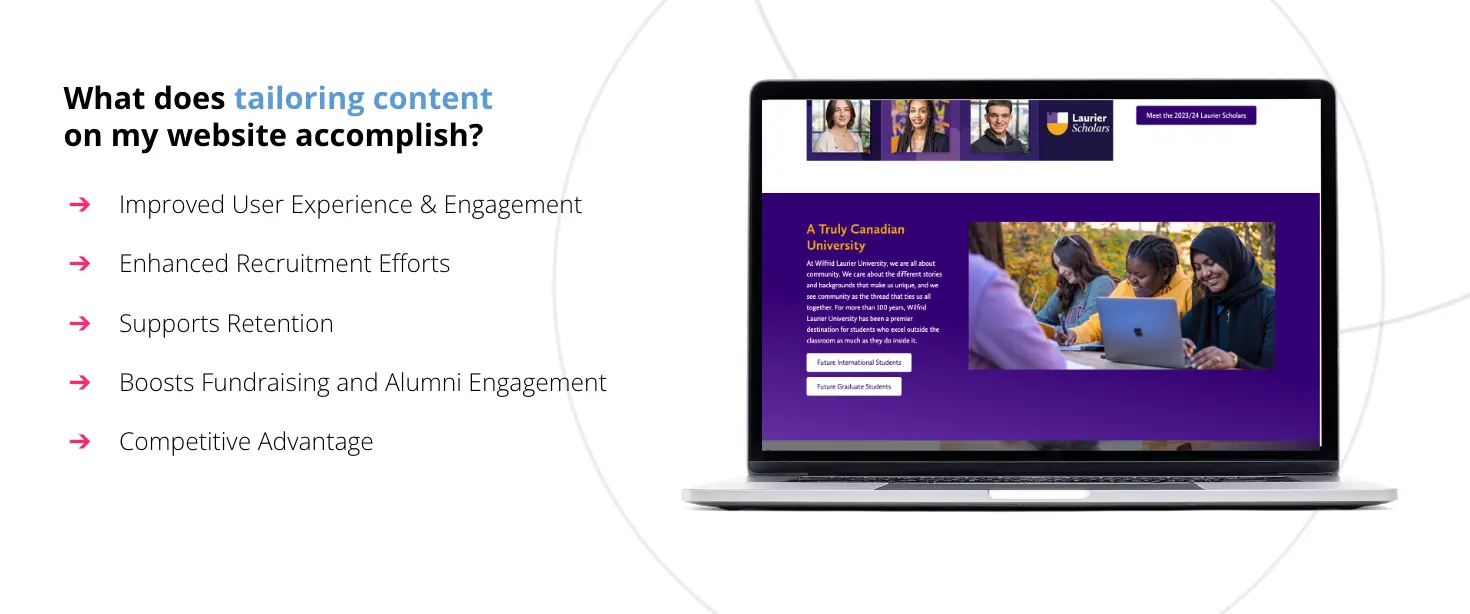
Smart Content: Lewis demonstrated how Clive seamlessly blends smart content with regular web content. For example, if a user searches for scholarships, the website displays relevant financial aid information without the user realizing that it is personalized content.
User Segmentation: Clive creates user segments by combining data points like location, search terms, and browsing history, allowing for more targeted content delivery.
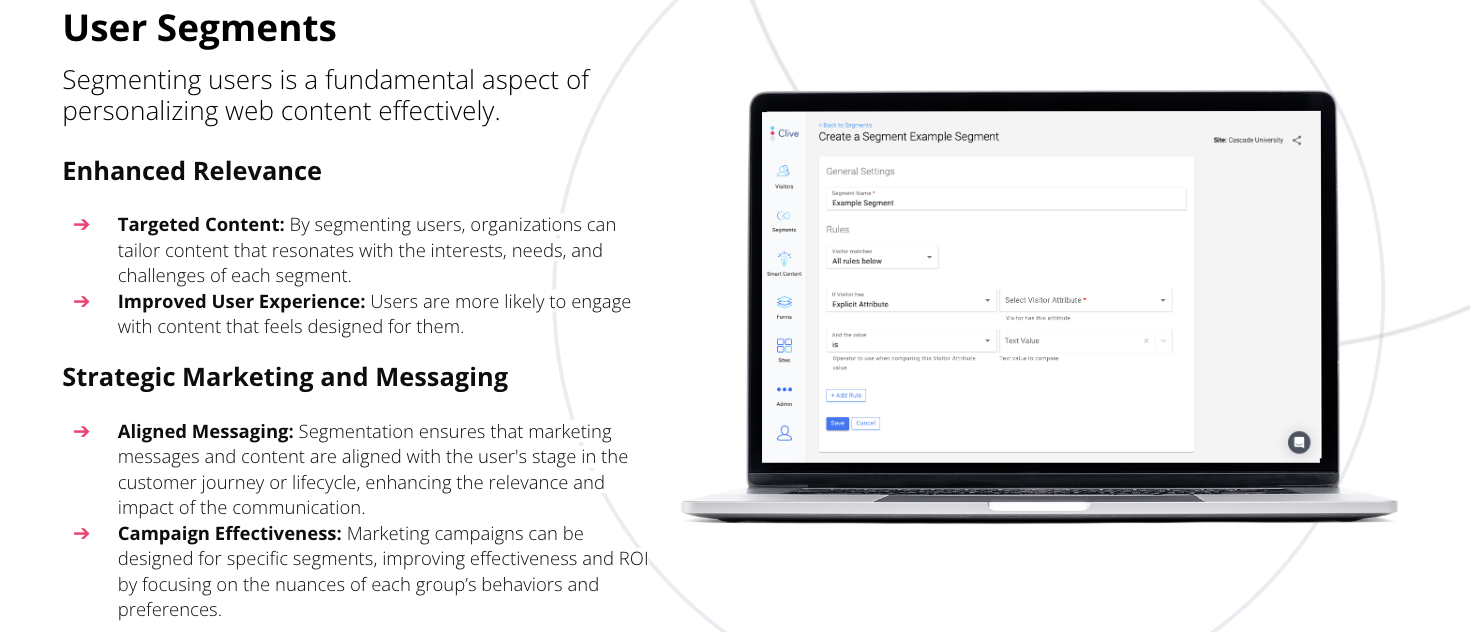
Lewis shared an example of a university website that dynamically changes content based on user search history. He discussed the importance of creating user segments to deliver specific content to different types of students.
He emphasized starting small with personalization efforts:
“Simple changes, like welcoming returning visitors or distinguishing between in-state and out-of-state students, can make a significant impact.”
He encouraged higher education institutions to embrace personalization to meet evolving user expectations.
Leveraging tools like Clive, institutions can create more engaging, relevant, and user-friendly websites, enhancing the overall digital experience for their audiences.
The "Search Smarter: Transform Site Searches Into Personalized Journeys!" webinar emphasized optimizing site search and content personalization for higher education websites.
Integrating intelligent search solutions and personalized content helps higher education institutions create engaging, user-friendly websites that meet evolving audience expectations.
These strategies offer a competitive edge in attracting and retaining students, faculty, and alumni.
For more insights, access the complete webinar recording. To unlock your website's full potential, complete the form below to discover how Clive can transform your content personalization strategy.
Last Updated: Jul 11, 2024 11:00 AM